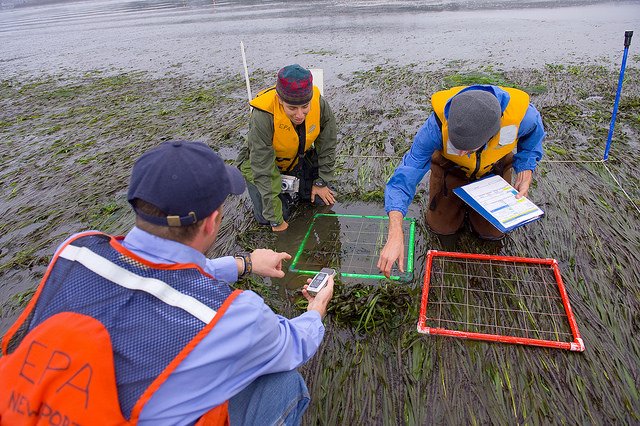Final Ecosystem Goods and Services (FEGS) Metrics Report
What are FEGS?
A central question for any environmental policy analysis is: what are the effects of this policy on human well-being? Final ecosystem goods and services are the features linking changes in ecosystems to changes in human well-being. This research analyzes how specific ecosystem components directly affect human well-being.
Ecosystem components directly linking ecosystem change to human well-being are called “Final Ecosystem Goods and Services”’ (FEGS). By identifying and using metrics of these components, ecosystem scientists can more easily link their work to the work of social scientists and make predictions of how ecosystem change impacts people. Overall, FEGS are those biophysical metrics that best facilitate social interpretation of ecological conditions that directly affect people’s welfare (Boyd et al., 20161).
Who Should Use the FEGS Metrics Report?

This report specifies over 200 metrics for 45 different ways in which people directly benefit from ecosystems across 7 ecosystems (coral reefs; estuaries; lakes; rivers and streams; wetlands; agricultural lands; forests). These metrics are provided in a set of tables that are available both in PDF and as a searchable MS Excel spreadsheet. The tables are organized by ecosystems and by the way in which people directly interact with or directly perceive nature, i.e. they are the beneficiaries of nature.
The tables also note the availability of data to quantify these metrics from remote sensing, models or direct observations. The body of the report describes a process by which these metrics were identified for these beneficiaries. This process can be used by analysts for other beneficiaries and ecosystems.
What are the benefits of using the FEGS Metrics Report?
Community decisions are complex, and rely on incorporating relevant environmental criteria and that are often hard to identify, particularly when they involve ecosystem related goods and services. The goal of the FEGS Metrics Report is to assist with that challenge. It provides a transparent, repeatable, and defendable approach for selecting relevant environmental attributes in the context of decision making.
The spreadsheet guides users through an informal, transparent, and recorded stakeholder prioritization process. Decision makers can then use the results of that process to systematically identify the most relevant environmental attributes to the community, and subsequently provide a clear picture of what perspectives were most influential to the their decision and why.
Related Resources
- Ecosystem Services Indicators: Improving the Linkage between Biophysical and Economic Analyses
- National Ecosystem Services Classification System - Plus (NESCS-Plus)
Citation
U.S. EPA. Metrics for National and Regional Assessment of Aquatic, Marine, and Terrestrial Final Ecosystem Goods and Services. U.S. Environmental Protection Agency, Washington, DC, EPA/645/R-20/002, 2020.
Technical Questions
Please send any comments specific to the FEGS Metrics Report to the FEGS Contact us form.
1. Boyd, J., P. Ringold, A. Krupnick, R. J. Johnston, M. A. Weber, and K. Hall. 2016. Ecosystem Services Indicators: Improving the Linkage between Biophysical and Economic Analyses. International Review of Environmental and Resource Economics 8:359-443.
